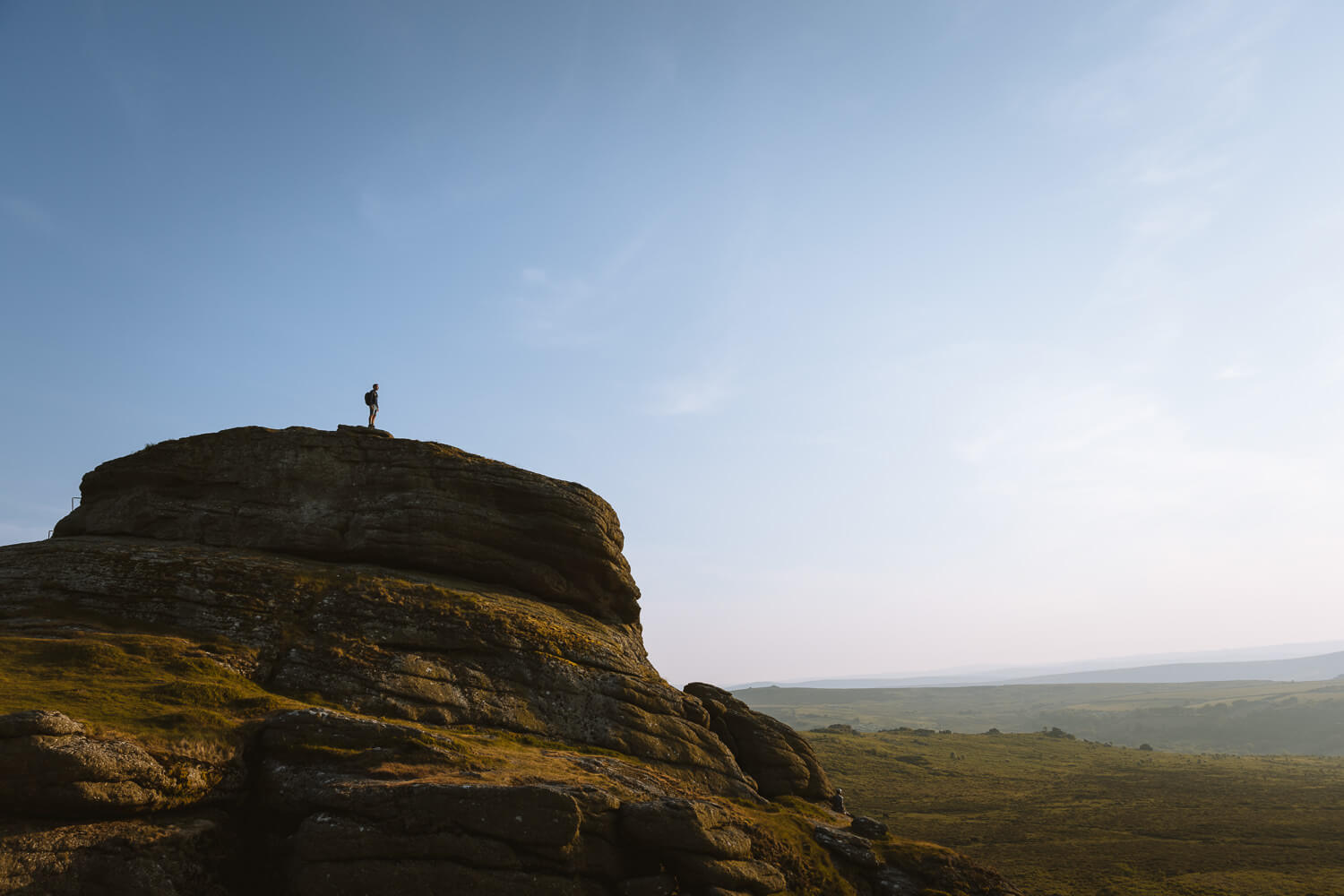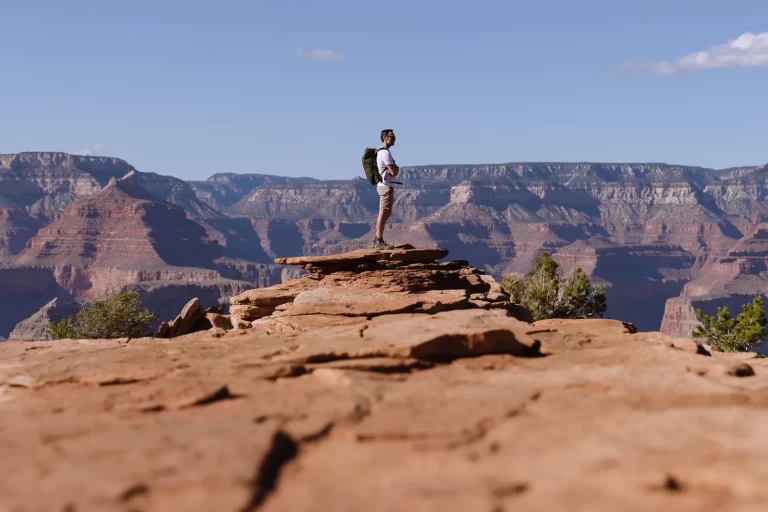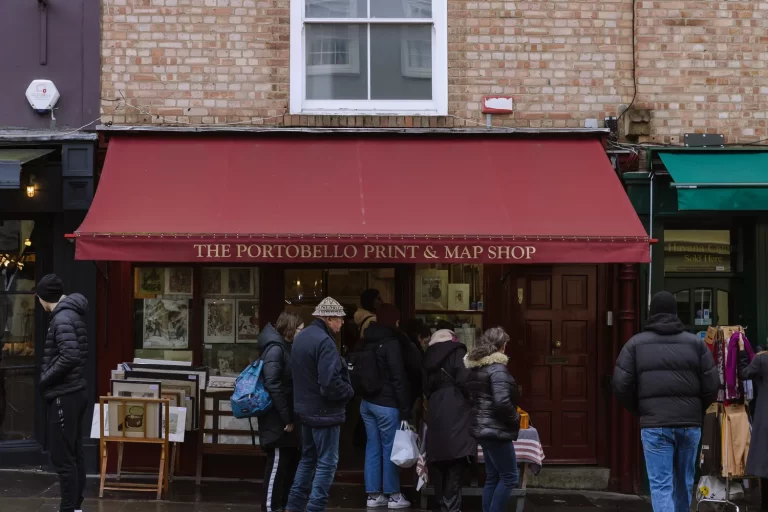10 Best Things To Do In Dartmoor National Park (+ Map & Tips) | Anywhere We Roam
Whether you’re an avid hiker, a wildlife enthusiast, or a history buff, the rolling moorlands and granite tors of Dartmoor make it a special place to visit. Here are the best things to do in Dartmoor National Park.
Spanning 350 square miles in southwest England, Dartmoor National Park is a remote and desolate wilderness defined by ancient rocky tors and moody moorlands.
Like the landscape that transitions from carpets of heather to brooding expanses, there are plenty of exhilarating things to do in Dartmoor.
Lace up your hiking boots and hit the trails, take a kayak out on a meandering river, or cool off in a secluded wild swimming spot. Stroll pretty villages with country pubs or admire vast medieval abbeys.
This guide contains the highlights from our rural getaway with Classic Cottages, covering all the best things to do in Dartmoor National Park.
Updates // We do our best to keep the information in this guide up to date, if you notice anything has changed, please leave a comment below.
Bookings // Booking your trip via the links in this guide will earn us a small commission, at no extra cost to you. Thanks for your support – Paul & Mark.


IN THIS GUIDE
DARTMOOR NATIONAL PARK
MAP – THINGS TO DO IN DARTMOOR
Dartmoor National Park is located in the county of Devon, just south of the city of Exeter. It’s renowned for its rugged, open moorland landscapes, granite tors, and diverse wildlife.
How to use this map / Click on the top left of the map to display the list of locations, then click on the locations to display further information. Click on the top right corner of the map to open a larger version in a new tab or the star to save to your Google Maps.
1 – HAY TOR
Nestled amidst the rugged beauty of Dartmoor National Park, Hay Tor is an awe-inspiring natural wonder. With its distinctive granite formation and sweeping panoramic views, this iconic landmark offers a unique blend of natural beauty and historical significance.
The tor itself, a towering rocky outcrop formed over millions of years, stands proudly against the horizon. The sheer face on one side attracts climbers, while the other side allows for a tricky clamber to the top. From its summit Dartmoor’s rolling hills and moorlands stretch as far as the eye can see, offering a wonderful tapestry of colours and textures.
It’s only a short walk to the bottom of the outcrop from Hay Tor car park. Come just before dusk for a magical sunset.
DETAILS | HAY TOR CAR PARK
Location – TQ13 9XT | Cost – £3 for 3 hours | Payment via the RingGo App



2 – LYDFORD GORGE
This captivating steep-sided gorge, carved by the meandering River Lyd, offers one of the best walks in Dartmoor. Owned and run by the National Trust, Lydford Gorge contains a blend of cascading waterfalls, temperate rainforests, and rugged rock formations.
The gorge is split into two areas, each with their own entrance – Waterfall Entrance and Devils Cauldron Entrance.
Waterfall Entrance – The path from the Waterfall Entrance descends either via steps or a winding footpath to the highlight of the gorge – the 30-metre-high Whitelady Waterfall. Beneath it a pretty rope bridge is strung across the river which is surrounded by lush green ferns and tangled branches. Allow about 30-45 minutes to explore.
Devils Cauldron Entrance – The path from the Devil’s Cauldron Entrance descends to where the River Lyd enters the gorge. Surging through the narrow canyon as it drops to the valley floor, the force of the water has carved circular pools in the rocks between the tight fern and moss clad walls. Allow about 30 minutes to explore.


LYDFORD GORGE WALK
We highly recommend connecting both sections of the gorge in one excellent walk. Start at the Devil’s Cauldron Entrance, follow the path (called top path)alongside the canopy of the trees.
After about 30 minutes the trail passes the Waterfall Entrance and drops down to the waterfall and rope bridge. The trail (called river path) now makes a lovely journey back along the bottom of the gorge with the babbling river Lyd, moss covered rocks and fern coated walls for company.
The path is narrow at times, with a 20-to-30-foot drop on one side and a handrail on the other. It can be slippery after rain but there is nothing technically difficult. The river path ends at the pools of the Devil’s Cauldron where it’s a short steep climb back to where you started. Allow about 2 hours.
DETAILS | LYDFORD GORGE
Hours – 10:00 am to 4:30 pm although sometimes closes due to high winds | Cost – Adult £11.00 / Children £5.50 / Family £27.50 / Free with NT membership | Facilities – Parking and toilets at both entrances and café at Devils Cauldron Entrance.



3 – ASHBURTON
From its quaint streets lined with charming cottages to its lively local markets and bustling independent shops, Ashburton is a delightful escape from the wildness of the Dartmoor National Park.
There’s a treasure trove of boutiques and art galleries, each offering vintage finds, local crafts, and artisanal goods.
With the Ashburton Cookery School on its doorstep the town’s food scene has thrived.
The Old Library // This relaxed café is a great spot for brunch with a diverse menu and good coffee.
Old Exeter Inn // Established in 1130, Old Exeter Inn has quality old-school pub food surrounded by atmospheric wood-panelled walls.
Coljan // Sourced from local providers, Coljan provides tasty food throughout the day, paired with a great selection of natural wines.
Riverford Field Kitchen // A few miles outside the centre of town, Riverford serves organic, veg-centric meals straight from their farm via a kitchen with a great imagination.



4 – DARTMOOR OTTER SANCTUARY
Tucked into the lanes of the village of Buckfastleigh are two rather surprising sights.
First is the Dartmoor Otter Sanctuary and Buckfast Butterfly Farm. Run by a local family, it has been rehabilitating injured otters and releasing them back into the wild for the last 38 years. Partly owing to their efforts, the wild otter population in the UK has steadily recovered.
The sanctuary has five enclosures housing European, American and Asian Otters. The best time to visit is at one of the three daily feeding times (see below).
Admission tickets include entrance to the attached butterfly farm.
DETAILS | DARTMOOR OTTER SANCTUARY
Hours – 10:00 am to 5:00 pm | Feeding times – 11:30 am, 2:00 pm and 4:00 pm | Cost – Adult £10.95 / Children £7.95




SOUTH DEVON RAILWAY
Built in 1872, the South Devon Railway is right next to the Otter Sanctuary. The tracks run for 7 miles along the valley of the River Dart between Buckfastleigh and Totnes. Time your visit to see the steam train leave or arrive at the station.
Alternatively, book a Heritage Train Experience on the South Devon Railway to experience all the nostalgia of the steam train journey.

5 – BUCKLAND ABBEY
Buckland Abbey is a 13th-century manor house on the southwestern edge of the Dartmoor National Park.
The former Cistercian monastery was transformed into an Elizabethan manor house after the Dissolution of the Monasteries in the 16th century. Its former owners include Sir Richard Grenville, a legendary naval captain, and the renowned seafarer Sir Francis Drake.
Today the National Trust-owned property has two remarkable highlights.

Firstly, the interior retains features from the 16th century and includes an intriguing exhibition to the life and times of Sir Francis Drake and the defeat of the Spanish Armada. The Great Hall displays the flamboyance of the Elizabethan era and Tudor wood carving.
Secondly, the Great Barn – bigger than the abbey – once held the store of corn amassed by Medieval monks.
The two buildings are surrounded by 27 acres of gardens, orchards and farmlands.
DETAILS | BUCKLAND ABBEY
Hours – 10:00 am to 4:30 pm although the abbey itself does not open till 11 am | Cost – Adult £14.00 / Children £7.00 / Family £35.00 / Free with NT membership | Facilities – There’s a National Trust café on side and toilets.



6 – RIVER DART
With its crystal-clear waters and steep-sided banks, The River Dart is one of the most beautiful rivers in England. From its source high in Dartmoor’s rugged hills, it carves its way through picturesque valleys, dense woodlands, and cascading waterfalls as it meanders downstream.
There are plenty of ways to enjoy it. Here are some of the best –
Spitchwick Common – This large grassy bank next to the River Dart is a great spot for a picnic. It’s only a 10-minute walk from the Newbridge Park (£3 all day parking, payment in coins only) and the water is deep enough for swimming.

Sharrah Pool – The best wild swimming spot in Dartmoor, Sharrah Pool is a 50-metre-long pool cut between two rocky banks. There are ledges to leap off and a small waterfall to slide down. Park at Newbridge Car Park, cross the bridge over the river and follow the path along the western bank for about 45 minutes.
Hexsworthy Bridge – A brilliant and little used wild swimming spot next to Hexworthy bridge. It has a small beach, grassy bank, and deep water under the bridge. There are four or five parking spots right by the road.
Totnes Kayak & Canoe – Further downstream where the river is wider and deeper, canoes, kayaks & SUPs can be paddled between Totnes and Dartmouth. It’s a great couple of hours on the river and you may even spot a seal.


7 – WIDDECOMBE IN THE MOOR
In the heart of Dartmoor lies the charming village of Widdecombe in the Moor. There’s not much to do here but no visit to Dartmoor is complete without ambling past its thatched cottages, old-world pubs and sweeping countryside views.
The village’s centrepiece is the St Pancras Church with an imposing tower and ancient stone walls rising above sheep strewn fields.
While in town, have a pint at the grade II listed, wisteria clad, Rugglestone Inn.

8 – THE GARDEN HOUSE
If you appreciate the artistry of landscaping, or simply yearn for a peaceful escape, The Garden House is an unmissable thing to do in Dartmoor.
Covering 10 acres, wild and landscaped gardens include manicured lawns, vibrant flower beds and hidden woodland paths.
Different times of year feature different plants. The Snowdrop Festival kicks the year off, followed by the Wisterias, Azaleas and Rhododendron in early summer. The herbaceous borders through late summer in the Walled Garden are stunning and the Acer Glade comes alive with ‘New England’ colours in autumn.
DETAILS | THE GARDEN HOUSE
Hours – 10:30 am to 4:00 pm | Cost – Adult £12.00 / Children £6.00 | Facilities – Parking is free, there is a café and toilets on site.



9 – DARTMOOR MEDIEVAL & PREHISTORIC SITES
The wild moors and tors of Dartmoor are littered with medieval and prehistoric sites. Many are little more than old rocks, but others offer a fleeting perspective of our own brief time on this largely untouched ancient land.
Postbridge Clapper Bridge // A clapper bridge is an ancient form of bridge found on the moors of England, consisting of large flat slabs of stone supported by piers. The one found at Postbridge is one of the best preserved in the country. First recorded in 1380, it was built to transport tin mined in Dartmoor to Tavistock.


Grimspound // The best preserved and most extensive prehistoric site in Dartmoor, Grimspound consists of 24 roundhouses and a 150-metre-long, 3-metre-thick wall. Dating back 3,000 years, its circular shape can be seen from miles around.
Merrivale Stones // Just a stone’s throw from the main road through the centre of Dartmoor, Merrivale Stones are Bronze Age megalithic monuments arranged in parallel lines.
Spinster’s Rock – The best surviving neolithic burial chamber (dolmen) in Devon, Spinster’s Rock was built in around 3,000 BCE, apparently by three (very strong) old women just before breakfast.


10 – DARTMOOR PUBS
There are few better things to do in Dartmoor than grab a pint of beer in an old-fashioned pub. Here are a few good ones to choose from.
Warren House Inn – Standing proud and solitary against the moor, the white walls of the Warren House Inn is a beacon on the rugged landscape. On a cold day, the crackling fire lights up the wood-panelled walls. When the sun comes out, there are cracking views across the moors.
Rugglestone Inn – Tucked into the back lanes of the picturesque Widdecombe in the Moor, the Rugglestone Inn was converted from a grade II listed cottage to an inn back in 1823. It has the pretty wisteria clad walls that would not be out of place in a Cotswold village.
The Cleave Public House – Nestled in the pretty village of Lustleigh, the Cleave Public House is a charming Inn with quality food. Its thatched roof and whitewashed walls sit behind a lovely, cobbled patio.


WHERE TO STAY NEAR DARTMOOR
There are many excellent cottages in Devon that make the most of visiting this beautiful county in England.
If you’re looking for a country escape to explore all the places in this guide, Classic Cottages have a wide range of cottages in Dartmoor located in pretty villages, bustling market towns or remote countryside.
We stayed in Higher Hisley Cottage, a country house perched on the hills behind the pretty village of Lustleigh. As a rural idyll surrounded by sheep strewn fields, its sweeping views were utterly uninterrupted by modern life.


This guide was produced in partnership with Classic Cottages.
THANKS FOR VISITING // WHERE NEXT?
A BIG THANK YOU
We’ve been providing free travel content on Anywhere We Roam since 2017. If you appreciate what we do, here are some ways you can support us.
Thank you!
Paul & Mark
FOLLOW US ON INSTAGRAM
USE OUR RESOURCES PAGE








